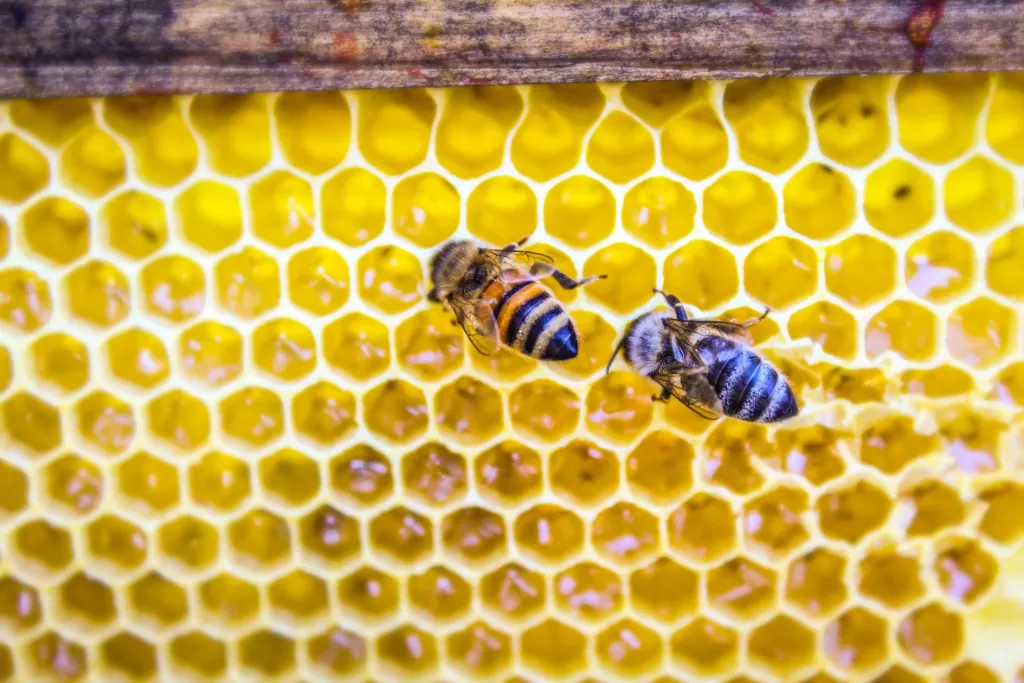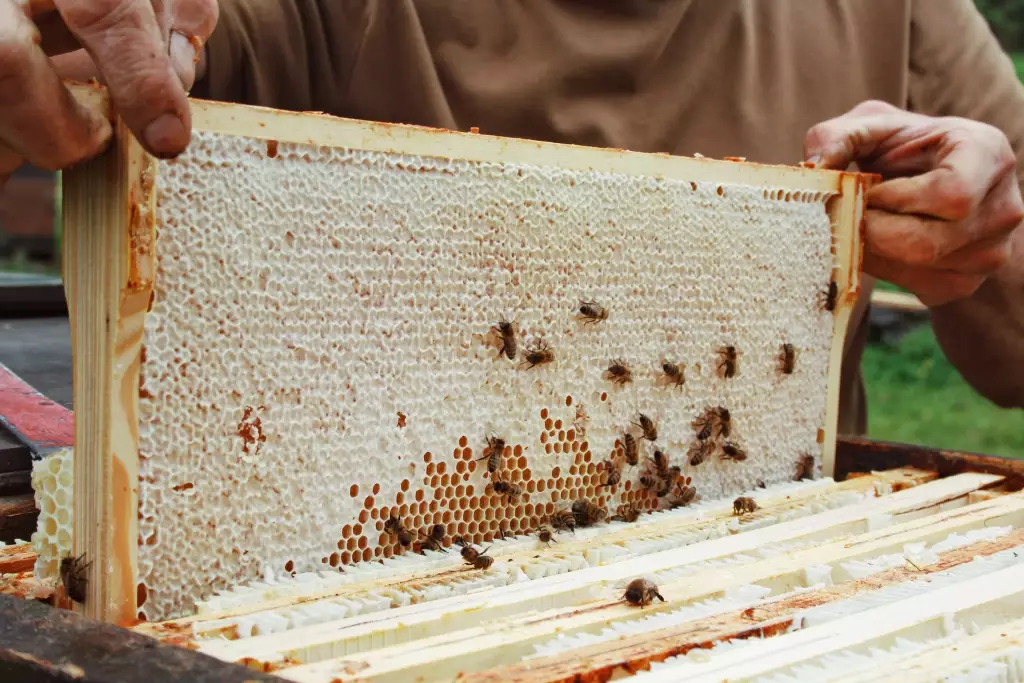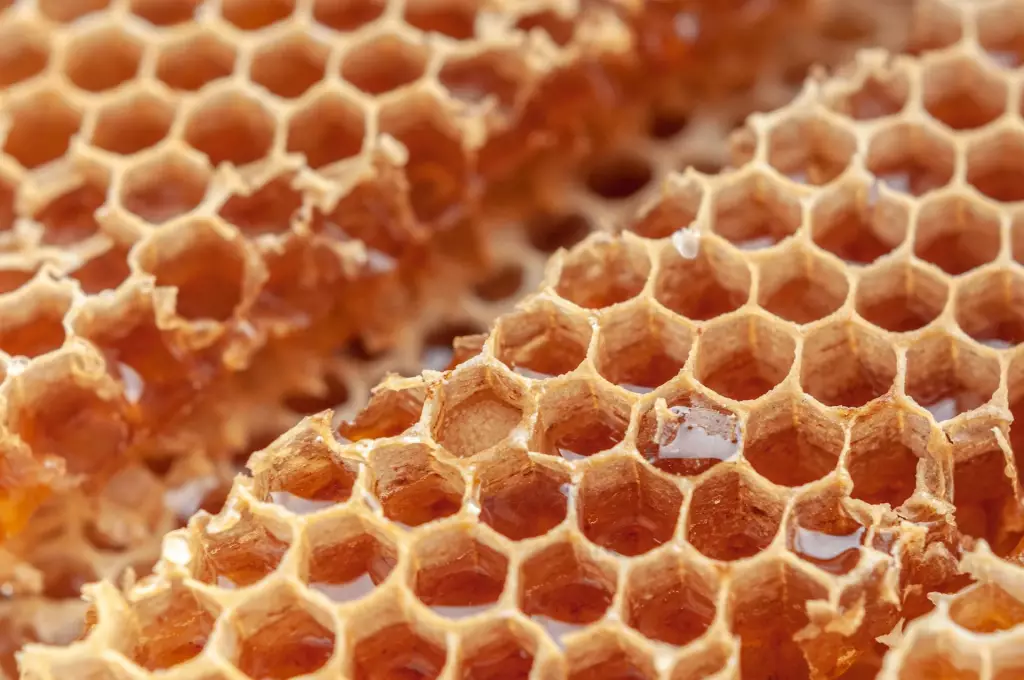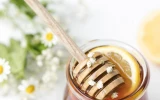Average Honey Production Per Hive Per U.S. State (Full Guide)
Honey production is an important industry in the United States, employing more than 22,000 people across the nation in production, importation, and packing jobs in 2017. It is a valuable source of income for beekeepers and provides pollination services for farmers. In this guide, we provide an overview of the average honey production per hive per state and show which states produce the most honey.
In the US, the average honey production per hive per year is approximately 60–85 pounds. The highest harvests were in North Dakota, South Dakota, and Montana, with an average production of 75 lbs. This figure depends on factors such as your region, colony health, growing season, regional flora, and climatic conditions.
The eastern states typically see higher yields due to the longer growing season, while the western states may produce less due to drier climates and shorter seasons. The information presented here is based on the latest available data from the USDA and beekeeping organizations.
Summary
- A common average honey production is around 60 pounds per hive during a season. This number is a general guideline, and individual hives may produce significantly more or less honey.
- California, North Dakota, South Dakota, Florida, Montana, and Texas offer favorable conditions and diverse flora for honey production. If you are a beekeeper in one of these states, you have the opportunity to enjoy high honey production while catering to various tastes and preferences.
- Factors affecting honey production include weather conditions, bee health, beekeeping practices, climate, the growing season, regional flora, and the type of honeybee used.

On this page:
Average Honey Production in the U.S.
On average, a hive produces approximately 60–85 pounds of honey per year in the US, based on data collected from beekeepers across the country. The eastern states tend to have higher yields due to the longer growing season, while the western states tend to have lower yields due to the shorter season and drier climate.
In addition to the regional differences in honey production, the type of honeybee used can also have an impact on the amount of honey produced. The most productive honeybees are Italian, followed by Carniolan, and then Caucasian.
Finally, the type of honey that is produced can also affect the yield, with clover honey being the most common and productive type. Other varieties, such as orange blossom, wildflower, and alfalfa honey, can also be produced but tend to have lower yields.
National averages of honey yield
In the United States, honey production varies from state to state. On average, U.S. honey production in 2019 totaled 157 million pounds, with 2.81 million colonies producing honey during that year. The average yield per colony was 55.8 pounds, a slight increase from 54.5 pounds in 2018.
Here are some key facts about the national averages:
- Total honey production in 2019: 157 million pounds
- Number of honey-producing colonies: 2.81 million
- Average yield per colony: 55.8 pounds
The U.S. Department of Agriculture publishes detailed honey production information for each state.
Top Honey-Producing States
In this section, we will take a closer look at the following top honey-producing states in the U.S. and their honey production: California, North Dakota, South Dakota, Florida, and Texas.
California has a diverse climate and numerous plant species
The average honey production per year in California is around 60–70 pounds per hive. This amount is slightly higher than the national average and is considered to be some of the best-tasting honey in the country. The state has a mild climate and is home to a variety of unique flora and fauna, all of which provide the bees with an abundance of nectar-rich plants.
California provides an excellent environment for honey bees. As a result, your hives in California may have the potential to produce a significant amount of honey each year.
In addition to honey production, California is also a major agricultural player in the almond sector, which requires pollination from honey bees. As a beekeeper in California, your bees might play a crucial role in the agriculture sector, besides producing honey.
North Dakota has abundant crops and bee species
North Dakota is home to a wide variety of bee species. The average honey production per hive in North Dakota is approximately 65–70 pounds of honey per year. This is slightly higher than the national average of 60–65 pounds of honey per hive per year.
In this state, honey bees feed primarily on alfalfa, clover, and sunflower plants. These flowering crops lead to honey production with distinct flavors and colors that make North Dakota honey highly sought-after.
As a beekeeper in North Dakota, you can benefit from the abundance of these specific crops, which contribute to the region's high honey production. The unique local flora also allows you to diversify your honey offerings and cater to different tastes.
South Dakota has a variety of flowers and bee species
South Dakota is also home to a wide variety of bee species, and the average honey production per hive here is slightly higher than in North Dakota. The average honey production is approximately 70–75 pounds per year.
This state offers your bees a range of nectar-producing plants and has a favorable climate for honey production. The variety of flowers in this region contributes to unique honey flavors that attract consumers.
South Dakota's honey production is vital to the local economy, and as a beekeeper in this state, you contribute to both the honey industry and the pollination of various crops grown in the region.
Montana is always among the top five states for honey production
Montana's honey yield per colony averaged 81 pounds in 2020 and 57 pounds in 2021. It is also home to a wide variety of bee species, and the honey production per hive in Montana is slightly higher than in North Dakota and South Dakota, which is approximately 80–85 pounds per year. Montana is consistently ranked among the top five states in the US for volume of honey production.
Florida has a humid climate perfect for honey production
The average honey production per hive per year in Florida is approximately 55–60 pounds. Honey produced here is generally considered to be some of the best-tasting and most fragrant honey in the country. The warm and humid climate of the state is perfect for honey production, as the bees can produce large amounts of nectar from native trees, shrubs, and wildflowers.
In Florida, the warm climate and wide range of flowering plants provide an ideal environment for honey production. Your bees in Florida can feed on plants like orange blossoms, saw palmetto, and gallberry, which provide unique honey flavors.
Beekeepers in Florida can not only produce several varieties of honey but also benefit from an extended honey production season due to the warm climate. This extended season allows your hives to produce more honey, contributing to Florida's position as one of the top honey-producing states.
Texas has some of the finest honey in the country
The average honey production per hive per year in Texas is around 65–75 pounds. This amount is significantly higher than the national average and is considered to be some of the finest honey in the country. The state has a warm and humid climate, which is ideal for producing honey.
The Lone Star State offers plenty of nectar-producing plants such as cotton, tallow trees, and various wildflowers. As a beekeeper in Texas, you have the opportunity to produce honey with diverse flavors depending on the plants your bees collect nectar from.
In addition to honey production, Texas beekeepers also contribute to pollinating various crops in the state, making them essential to the agriculture industry.
Regional Variations of Honey Production

In the United States, honey production varies significantly from region to region due to differences in climate, the types of flowers available to bees, and the length of the growing season. This section will explore the variations in average honey production per hive per year in different U.S. regions, divided into the Northeast, South, Midwest, and West.
Northeast region enjoys relatively long growing seasons
The Northeastern region also enjoys a diverse plant life, which contributes positively to honey production. In this region, you might find that average honey production per hive is relatively higher than in other parts of the country, possibly around 70–80 pounds per hive per year.
Factors such as local climate, altitude, and the specific types of flowers that bees have access to will all contribute to the amount of honey produced in the Northeast.
South region typically experiences warmer temperatures
The southern region has varied landscapes, which can be both beneficial and challenging for honey production. However, in general, the South also has relatively high honey production per hive per year, with averages of around 50–70 pounds.
Although the warmer temperatures can be an asset for bees, extremes in temperatures and weather events can negatively impact honey production levels, so you might find variations in honey production within the South.
Midwest region has a shorter growing season
In the Midwest region, honey production might be slightly lower compared to other regions, with an average of 40–60 pounds per hive per year. This is partially due to the shorter growing season and harsher winters.
The presence of agricultural land, with its monocultural practices, might also influence honey production levels in the Midwest. Nonetheless, there are many beekeepers in the Midwest who maintain successful and productive operations, so you should not be discouraged from setting up hives in this region.
West region has generally drier climate
The Western region of the United States has diverse landscapes, climates, and vegetation, which can have various effects on honey production per hive per year. Generally, honey production per hive per year here is lower than average, with estimated production ranging from 30–60 pounds.
One factor affecting honey production is the shorter growing season in the West due to its generally drier climate. That being said, depending on your specific location, you might still find plenty of opportunities for successful and productive beekeeping operations.
Tips for Maximizing Honey Production

Good hive management practices to maximize honey production
- Inspect hives regularly: Perform regular inspections to ensure that your hives are healthy and functioning properly. Keep an eye out for signs of diseases, pests, or any other issues that could potentially impact honey production source.
- Add honey supers: Installing honey supers on top of your existing hive can significantly boost honey production. When bees fill shallowly drawn frames in these supers, you can safely extract honey without causing harm to the hive source.
- Provide adequate space: Ensure that there is enough space within the hive for your bees to continue producing honey. You can do this by adding more supers or frames to the hive, as needed. A crowded hive can lead to reduced honey production, as the bees cannot move and forage as easily. Make sure to provide enough space for your bees to move around and forage for nectar.
- Use the right beekeeping equipment: Investing in the right beekeeping equipment can help increase honey production. This includes protective clothing, hives, frames, and beekeeping tools.
- Harvest the honey regularly: If honey is left in the hive too long, the bees may consume it or produce wax instead. Make sure to harvest the honey at the right time, leaving enough for the bees to feed on throughout the season.
Forage availability maximizes honey production
Ensure that your bees have access to sufficient sources of nectar:
- Choose suitable locations: Place your hives in an area with abundant foraging options throughout the foraging season. This means that your bees should have easy access to a wide variety of flowering plants that provide pollen and nectar.
- Plant forage crops: Consider planting a selection of forage crops near your hives, to provide your bees with ample sources of nectar. This can also be beneficial for the surrounding ecosystem, as it promotes pollination and supports other pollinators. Bees need a steady supply of nectar and pollen to produce honey. Planting a variety of flowers that bloom throughout the season can provide a continuous food source for your bees.
- Be mindful of seasonal changes: Keep in mind that the availability of forage changes throughout the year. Adjust the location or management of your hives as necessary to ensure your bees always have access to nectar-rich plants.
Factors That Can Affect Honey Production

The availability of flowers contribute to producing honey
Bees rely on different flowers to produce honey. Without a steady supply of flowers, honey production can be significantly reduced. In areas with a limited variety of flowering plants, bees may not have enough pollen or nectar to produce an adequate amount of honey. If the flowers are not blooming in a certain season, the bees may not be able to find enough food to produce honey.
Favorable weather conditions impacts honey yield
The availability of nectar-producing flowers heavily depends on favorable weather conditions. Excessive rain, drought, and temperature fluctuations can have a significant impact on honey production.
Honey production is affected by weather conditions such as temperature, humidity, and precipitation. Warmer temperatures and inadequate rainfall can reduce nectar and pollen sources, leading to lower honey production. Too much rainfall and high humidity can also reduce the number of bees that can forage and lead to increased disease in the hive.
The health of the bees is critical for honey production
Pests, diseases, and exposure to pesticides can affect the health of honey bees, thus negatively impacting the colonies' honey production. A healthier bee population typically contributes to better honey yields.
Bees are essential for honey production, and the health of the bee population is critical for producers. Unfortunately, bee populations are declining, due to environmental stressors such as climate change, habitat loss, and the use of pesticides. This has resulted in reduced honey production and higher prices for consumers.
The type of flowers available to honeybees
Generally, flowers with a high nectar content, such as clover, will produce higher yields of honey. Additionally, the amount of pollination activity in an area can also impact honey production. If there is less pollination activity, there will likely be lower yields of honey.
The availability of beekeepers
Beekeepers are essential to honey production, as they ensure that bee colonies have the right conditions to make honey. If beekeepers are not available, honey production can be affected.
Without beekeepers, honeybees may suffer from diseases or lack of food, leading to decreased honey production. Beekeepers also help to keep honeybee populations healthy, so their availability is key to successful honey production.
The management techniques used by beekeepers can also impact honey production. Providing adequate nutrition, controlling pests, and practicing proper hive management can lead to improved honey production.



